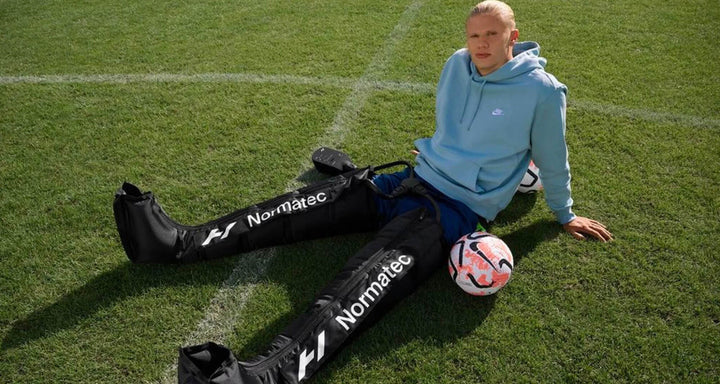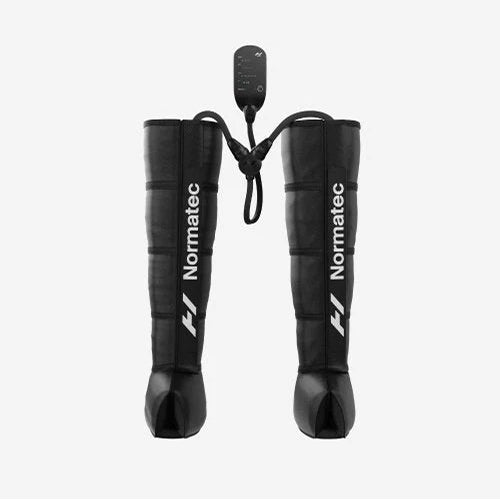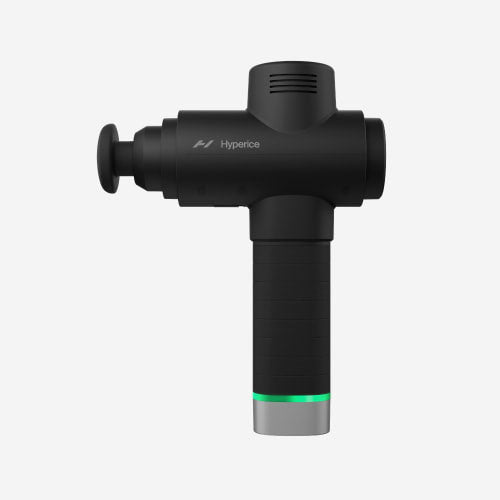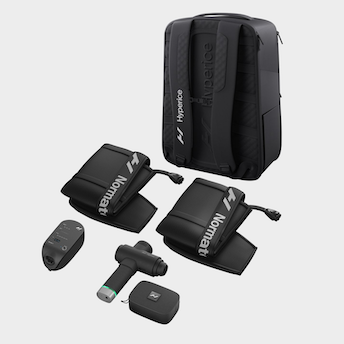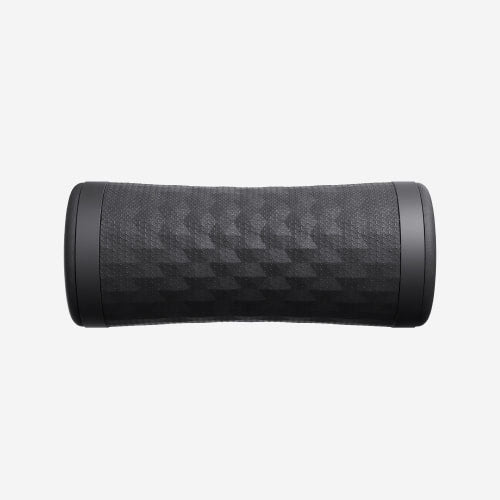What Are Compression Boots?
Compression boots are inflatable sleeves designed to cover the legs and apply rhythmic pressure through a process called intermittent pneumatic compression (IPC). This technology was first developed in the medical world, where it was primarily used to prevent deep vein thrombosis (DVT) and manage conditions such as lymphedema. Over the last decade, however, compression boots have transitioned into the athletic recovery space, where they have become a common sight in gyms, physiotherapy clinics, and even at home.
In simple terms, compression boots mimic the body’s natural muscle pump. By rhythmically inflating and deflating, they help move blood and lymphatic fluid back toward the heart. This mechanism improves circulation, reduces swelling, and leaves users with a sensation of lighter, fresher legs after strenuous activity. As one systematic review in the Journal of Physiotherapy put it, “IPC has long been established in medical contexts to improve venous return, prevent thrombosis, and manage fluid buildup. Its translation into sports recovery has been a natural progression given its physiological mechanisms” (PMC7039487). In other words, IPC helps improve circulation by boosting blood flow, preventing blood clots, and reducing swelling, which translates into better recovery, less soreness, and improved overall leg function. Compression boots are part of a growing trend of advanced recovery tools, and many athletes now combine them with other modalities like massage therapy.
How Do Compression Boots Work?
The mechanism of action behind compression boots lies in their ability to replicate a wave-like massage through sequential inflation. This means that when the boots inflate, they start at the foot and gradually move upward, compressing the calf, knee, and thigh in order. Once inflated, the air chambers deflate, and the cycle repeats. This sequential compression improves venous return (blood flow back to the heart), encourages lymphatic drainage, and reduces the buildup of metabolic waste products such as lactate, which is often associated with post-exercise soreness.
A clinical trial published in the Journal of Vascular Surgery found that “IPC devices significantly increased venous blood flow velocity by up to 200% compared to resting states, demonstrating their efficacy in improving circulation.” (Journal of Vascular Surgery). In other words, the boots are able to create a physiological response similar to what happens when you move, without requiring the muscles to do the work.
To see how they work in action, check out this video from Hyperice that shows how they work and how to operate the Normatec system.
What Does Science Say About Compression Boots?
The research on IPC and compression boots has expanded considerably in recent years. A systematic review and meta-analysis (TerMedia 2022 Review) analysed studies on athletes across multiple sports and concluded that “IPC reduced perceived muscle soreness by an average of 13–20% compared with passive recovery controls.”.
Similarly, a study on ultramarathon runners demonstrated that IPC accelerated the recovery of muscle function and reduced soreness within the first 24–48 hours compared to passive rest (PubMed 27011305). For athletes dealing with extreme exertion, this ability to bounce back quickly can be invaluable.
However, not all studies show clear physiological improvements. For example, research published in PubMed found that markers of muscle damage, such as creatine kinase, did not significantly differ between IPC and control groups (PubMed 24531439). This suggests that while athletes may feel better after using compression boots, the biochemical markers of measurable muscle damage reduction may not always reflect those improvements.
Physiological Benefits
Despite mixed findings, there is strong evidence for several key benefits of compression boots. Studies have shown that IPC can reduce delayed onset muscle soreness (DOMS), improve circulation, and decrease stiffness.
For example, a study on soccer players found that “a single 30-minute IPC session reduced DOMS scores by 15% the following day” (PubMed 33418535). Meanwhile, the Journal of Applied Physiology reported that IPC “increased blood flow and oxygen delivery to working muscles by enhancing venous return during recovery periods” (Journal of Applied Physiology).
A 2024 study in Springer added further evidence, noting that two weeks of repeated IPC use resulted in “significant improvements in joint flexibility and reduced subjective stiffness in resistance-trained athletes” (Springer 2024). Outside of athletic use, IPC has also proven beneficial in clinical contexts. Studies in post-operative patients show a reduction in swelling of up to 25% within 48 hours (PMC7039487).

Photo by Oleg Rostovtsev on Unsplash
Findings and Considerations
While the evidence supporting compression boots is strong in some areas, it is not unanimous. Many studies highlight positive short-term outcomes, particularly reduced soreness and fatigue perception. Athletes often report feeling more “ready” to train again, which in itself is valuable. However, the long-term impact on objective performance outcomes such as sprint speed, strength, or endurance remains less clear.
A review in Sports Medicine noted: “While IPC reliably improves subjective measures of recovery, objective performance outcomes such as sprint speed or VO2max show limited changes” (PMC3629206). This has led some experts to suggest that compression boots are best viewed as a tool to support recovery rather than a way to improve performance metrics.
There are also practical considerations. The benefits of IPC appear to be most pronounced when used for 15–30 minutes immediately after exercise. Shorter sessions, under 10 minutes, tend to show negligible benefits (PubMed 24077383). In addition, settings such as pressure intensity should be personalised to the individual; too much compression can cause discomfort, while too little may not provide adequate recovery benefits.
Emerging Evidence
Research into IPC and compression boots is ongoing, with newer studies providing additional insight. A recent randomised controlled trial found that IPC accelerated blood lactate clearance by 15% compared to passive rest (PubMed 37792163). This research suggests that compression boots play a key role in helping the body clear metabolic byproducts, like lactate, more efficiently after intense exercise. Lactate buildup is a major contributor to muscle fatigue and soreness, and by speeding up its removal, compression boots allow for faster recovery. This means athletes can reduce muscle fatigue and soreness, ultimately preparing them better for their next training session or competition. By clearing these byproducts quickly, compression boots help athletes recover more effectively and perform at a higher level in subsequent workouts.
Clinical trials also support IPC’s broader utility. For example, research published in the Journal of Vascular Surgery highlighted IPC’s ability to improve venous function and reduce edema in patients with venous insufficiency (Journal of Vascular Surgery). Similarly, a 2024 review in the European Journal of Applied Physiology concluded: “IPC may represent a cost-effective adjunct to standard recovery strategies, particularly when integrated with sleep, hydration, and nutrition” (Springer 2024).
Who Could Benefit from Compression Boots?
Compression boots are not just for elite athletes. Their benefits extend to a wide range of individuals:
- Endurance athletes such as runners, cyclists, and triathletes often rely on IPC to manage heavy training loads and minimise soreness between sessions.
- Strength and HIIT enthusiasts benefit from faster recovery, particularly during phases of high training volume or competition prep.
- Professionals who spend long hours on their feet, including nurses, retail workers, and hospitality staff, often experience leg fatigue that IPC can help alleviate.
- Clinical populations can also benefit from compression boots. A 2000 study found that “IPC improved venous function and reduced edema in 80% of clinical patients tested”(PubMed 10757194). For individuals with conditions such as venous insufficiency or lymphedema, IPC can serve as an important therapeutic tool, though medical guidance is always recommended.

FAQs
How often should I use compression boots?
Most studies recommend 15–30 minutes per session, especially post-exercise, but daily use is considered safe for most healthy individuals.
Are compression boots safe for everyone?
Compression boots are not suitable for people with untreated DVT, severe vascular conditions, or nerve damage. Always consult a healthcare provider if you have underlying health issues.
Do compression boots improve performance or just recovery?
Evidence suggests that the most consistent benefits are in recovery perception and reduced soreness. Direct performance enhancement is less conclusive.
Can I replace stretching or active recovery with compression boots?
No. Compression boots should complement, not replace, active recovery strategies such as stretching, mobility work, and low-intensity exercise.
Final Thoughts
Compression boots represent a unique blend of medical technology and sports science. While they may not be a magical fix for performance enhancement, the evidence shows they provide measurable relief from soreness, improve circulation, and accelerate recovery perception. For athletes training at high volumes, professionals on their feet all day, and clinical populations managing circulation issues, IPC can make a tangible difference in both comfort and performance readiness.
As with any recovery strategy, compression boots work best when integrated into a holistic routine that includes sleep, hydration, proper nutrition, and active recovery. Used wisely, they can be a powerful tool to help you feel fresher, recover faster, and get back to doing what you love.
